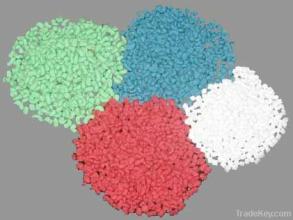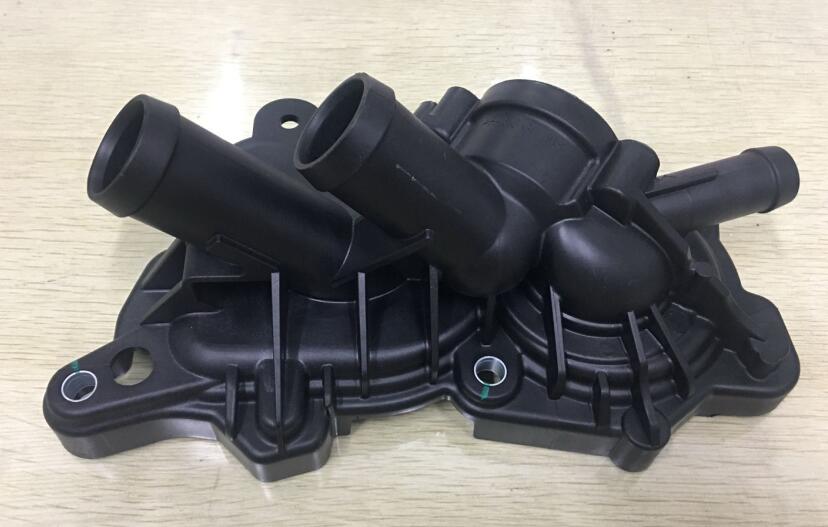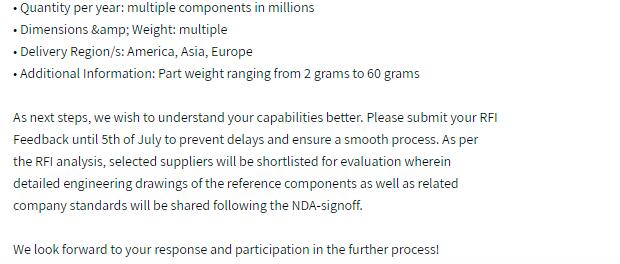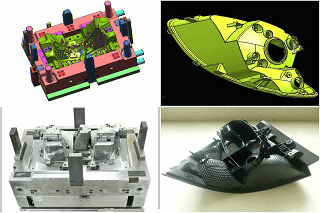Plastic Material

Rapid Prototyping
2019年3月25日
Clear plastic injection molding
2019年10月21日Top 16 Plastic Injection Moulding Material Selection in China
For a general guide to choosing resins for injection molding parts.
Selecting the correct material for each application can be a daunting task, requiring in-depth knowledge. Recommending the right type and grade of resin hinges on a thorough understanding of the product’s application.
All application characteristics need to be carefully weighed before a determination is made of the panoply of injection molding resins available. And we are happy to work with specific resins you already use and would like to supply to us,
.
Partial Thermoplastics and Thermoset Raw Materials Overview:
IMPORTANT: Information below is a general materials description overview, and is intended for preliminary material identification ONLY.
1.ABS (Acrylonitrile Butadiene Styrene)
the amorphous polymer that’s easy to work. Good impact strength and appearance. Poor chemical resistance. Commonly used in computer shells, medical parts, hand-held appliances, auto trim parts. Flame retardant and medical grade availability.
2.PC (Polycarbonate Alloy)
Stronger than ABS. Exceptional impact strength at low temperatures. Flame retardant grades available. Less expensive than Polycarbonate. Limited availability due to a worldwide shortage.
3.Acetal (POM)
Acetal Polymers that are semi-crystalline and have excellent fatigue resistance, lubricity, and chemical resistance. Can omit gasses at higher temperatures. Brittle at lower temperatures. Enhanced lubrication and glass-filled grades available.
4.PMMA, Acrylic
Amorphous polymers offering superb clarity. Used in optical applications. Excellent weather durability for outdoor applications.
5.Nylon 6
Semi-crystalline polymer with low cost and high-performance versatility and the lowest modulus of all nylon. Lower grades subject to property change if exposed to moisture. it can be reinforced with compounds and additives to expand the property range.
6.Nylon 6-6
Improved properties over Nylon 6. h3 abrasion resistance. Glass fiber reinforcement grades used for metal replacement.
7.Nylon 11
Less susceptible to moisture absorption than Nylon 6 and 6-6. Compounded with reinforcements and additives to increase property stability and range including impact strength, flexibility, and dimensional stability.
8.PBT Polyester
(Polybutylene Terephthalate)
Versatile, semi-crystalline materials with broad property range. Performance is similar to Nylon. Resists abrasion, temperature, moisture. Effective electrical barrier with superb impact strength. Subject to failure is notched under stress. Difficult to mold to extremely tight tolerances.
9.LCP (Polyester Liquid Crystal Polymer)
Material made of polymer molecules with Tensile Strength and modulus close to aluminum. Molecular orientation causes structural strength to be only inherent in the outermost skin layers, presenting design and molding challenges.
10.PP, Polypropylene
Semi-crystalline material. Wide range of properties, usage, and cost. Chemical and low- temperature resistant. Difficult to mold to very close tolerances.
11.PC, Polycarbonate
Amorphous material with superb clarity, Impact Strength, and mechanical properties. Widely used in optical applications. Medium weather durability. Limited availability.
12.Polyimide
Available in both amorphous and crystalline grades. Excellent at high temperatures. Susceptible to alls. Expensive.
PO Modified Polyphenylene Oxide
(Noryl)
Amorphous material with properties superior to ABS, although more expensive. Good Impact Strength, stiffness, surface appearance. Chemical resistant. Flame retardant.
13.PPS Polyphenylene Sulfide
Semi-crystalline material. Available in a wide range of compounded variations, providing good mechanical properties. Excellent resistance to chemicals and high temperatures. Popular and effective bearing material.
14.TPE
TPEs are a family of rubber -ike materials that combine the characteristics of rubber with the recyclability and processing advantages of plastics.
There are six generic classes of TPEs
- Styrenic block copolymers (TPE-s or TPS compounds based on SBS, SEBS)
- Polyolefin blends (TPE-O or TPO)
- Elastomeric alloys (TPE-V or TPV)
- Thermoplastic polyurethanes (TPE-U or TPU)
- Thermoplastic copolyester (TPE-E or TPC))
- Thermoplastic polyamides (TPE-A or TPA)
15.Polysulfone
An amorphous, temperature-resistant, transparent material with reasonably low cost. Effective at up to 300 F. Can be compounded with glass and minerals.
16.LSR Liquid Silicone Rubber
Inorganic synthetic elastomer made from a cross-linked silicon-based polymer reinforced with filler.it Provides long service life retaining natural flexibility and resilience. Weather-resistant, temperature resistant, good electrical insulating qualities, excellent sealing performance, Inert (no taste or smell), range of colors and hardness, excellent flow properties for fabrication.
Most materials are available in many colors
- Natural
- Black
- White
- Clear – available in ABS, polycarbonate, styrene, and acrylic.
- plus Custom Colors (coloring charges may apply)




